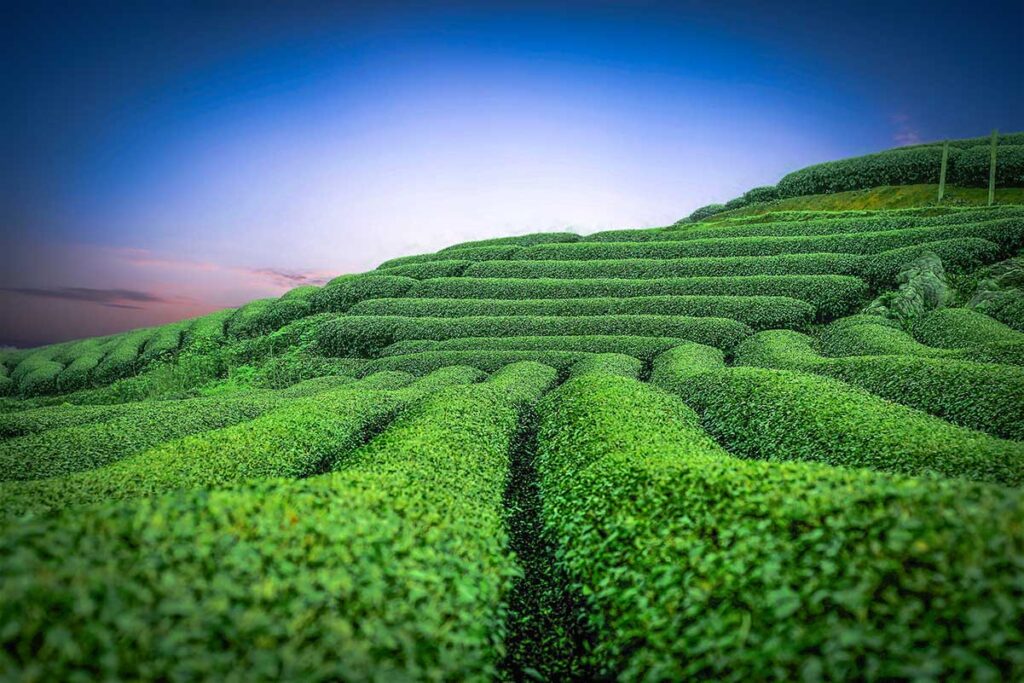What makes tea on Moc Chau Plateau special?
Tea has been grown on Moc Chau Plateau since the French colonial period, when the first farms were established due to the region’s ideal climate and fertile soil. Over time, the area shifted from state-run plantations to local cooperatives and now includes modern organic farms like Moc Suong, which produce export-quality tea for markets in Japan, Taiwan, and Europe.
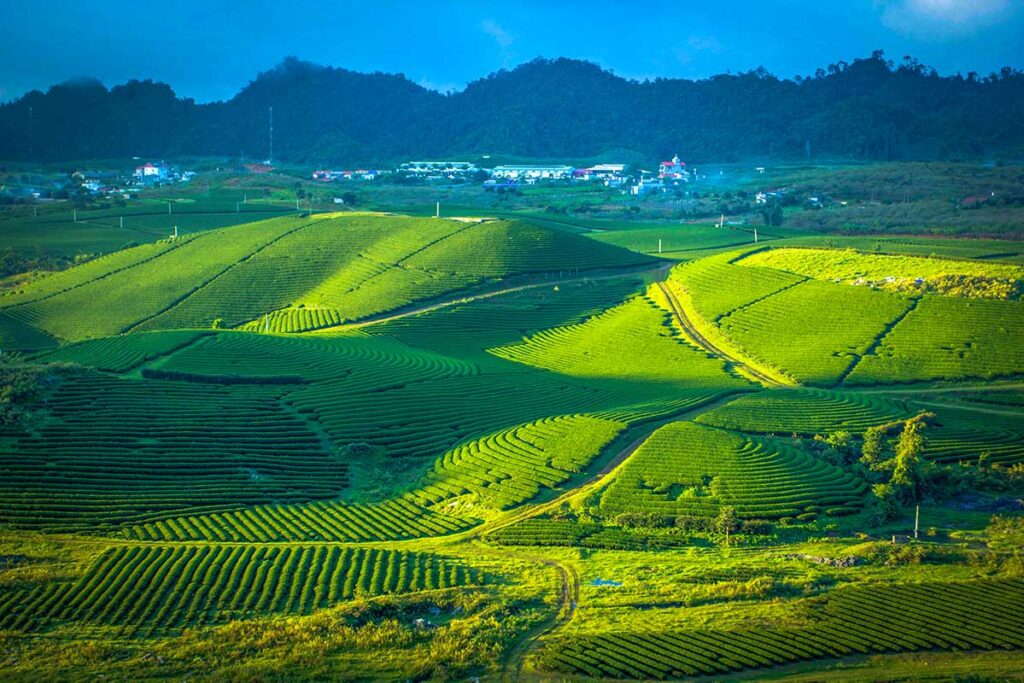
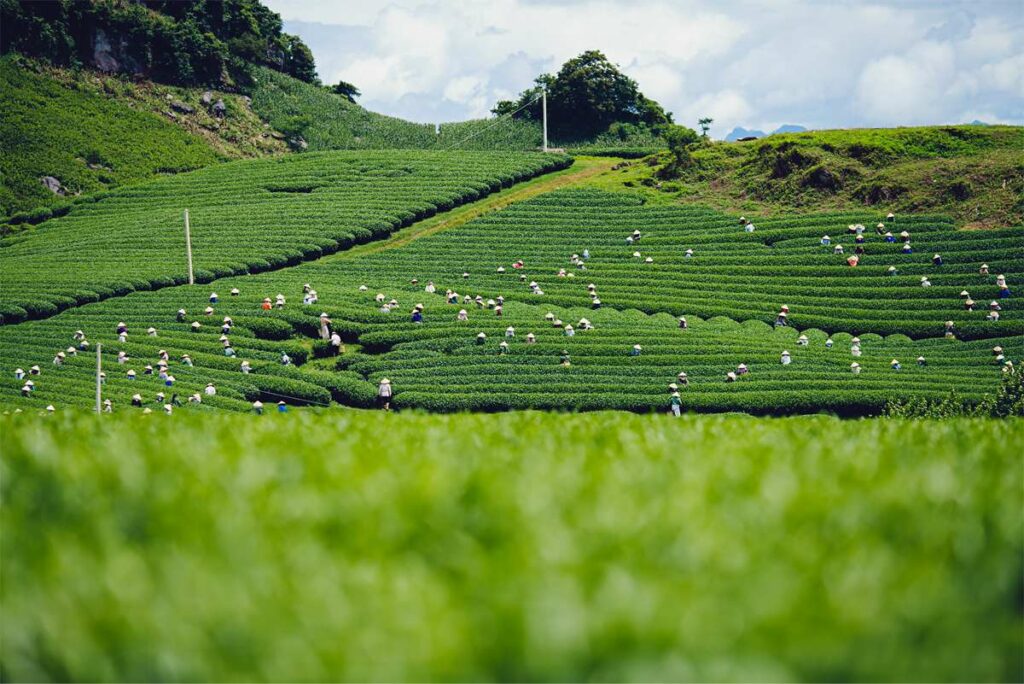
Sitting at an altitude between 1,050 and 1,250 meters, the plateau has cool weather year-round and frequent morning mist — perfect conditions for slow-growing, flavorful tea leaves. The main varieties cultivated here include Shan Tuyet (a traditional Vietnamese tea), as well as imported types like Oolong, Kim Tuyen, and Thanh Tam, known for their floral aroma and smooth taste.
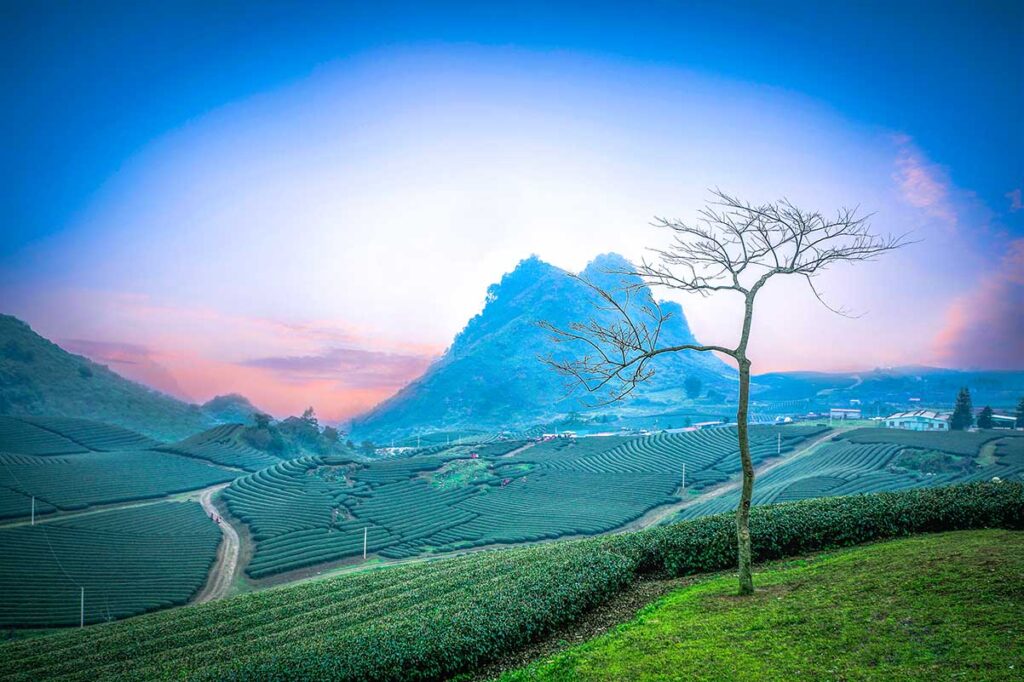
Thanks to the altitude, rich volcanic soil, and careful harvesting practices, Moc Chau tea tends to have high levels of natural oils and a strong, lasting flavor. Many farms avoid chemical fertilizers or pesticides, which adds to the appeal for both connoisseurs and casual tea drinkers.
Plan a custom tea-themed Moc Chau trip
Explore Moc Chau’s best tea hills with ease. We can arrange a custom tour with transport, visits to plantations, and optional add-ons like waterfalls or flower valleys.
Best time to visit the tea plantations
You can visit Moc Chau’s tea hills year-round, but some seasons are more scenic than others. From March to April, the fields are covered in fresh, bright green tea buds — this is when the landscape looks its most lush. May to September is harvest time, and if you go early in the morning, you’ll often see locals hand-picking tea in traditional conical hats.
In late autumn and winter, the tea hills remain green, but some areas may be trimmed back after the harvest. If you’re after photos or a peaceful walk, early mornings are best — the light is soft, and there are fewer people around.
Try to avoid visiting during Tet (Vietnamese New Year) if you want quiet, but keep in mind that flower season (around late January to February) adds extra color to the landscape, especially if you’re combining tea hills with plum or mustard blossom valleys.
5 Best tea plantations on Moc Chau Plateau
1. Heart-Shaped Tea Hill (Taiwanese Plantation / Tan Lap)
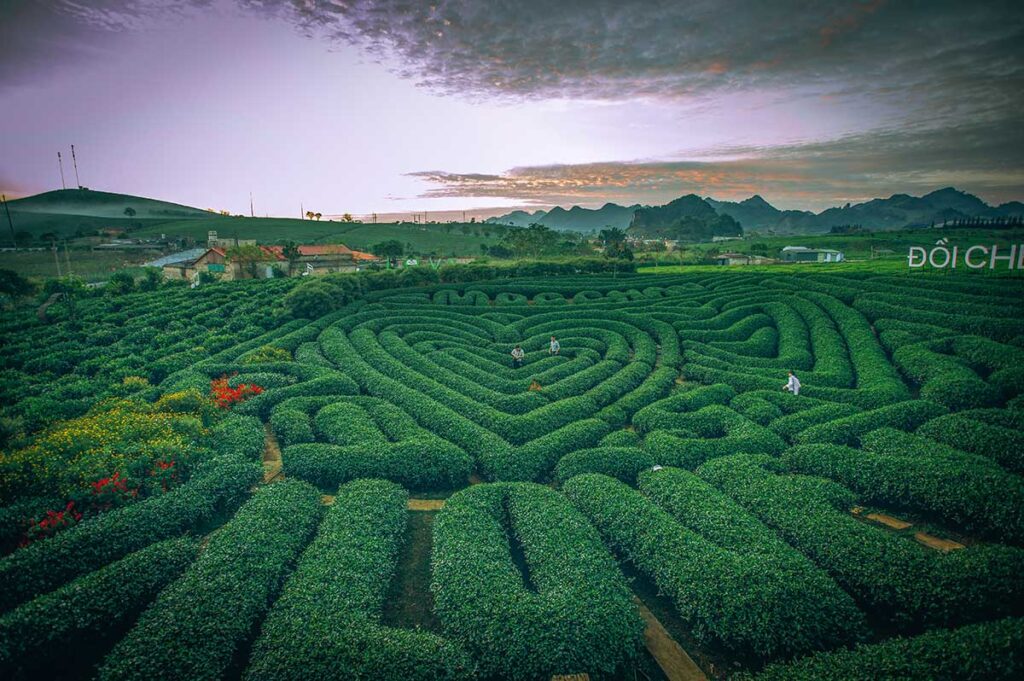
This is the most famous tea hill in Moc Chau — known for its distinctive heart shape carved into the tea rows. It’s a popular check-in spot for couples and Vietnamese wedding shoots, thanks to the romantic design and open views.
Located in Tan Lap Commune, it’s about 10 km from Moc Chau town and easy to reach by motorbike or car. The road is paved and well-marked.
Tip: Visit early in the morning to catch the best light and avoid crowds, especially during weekends or flower season.
2. Moc Suong Tea Hill (Tan Lap)
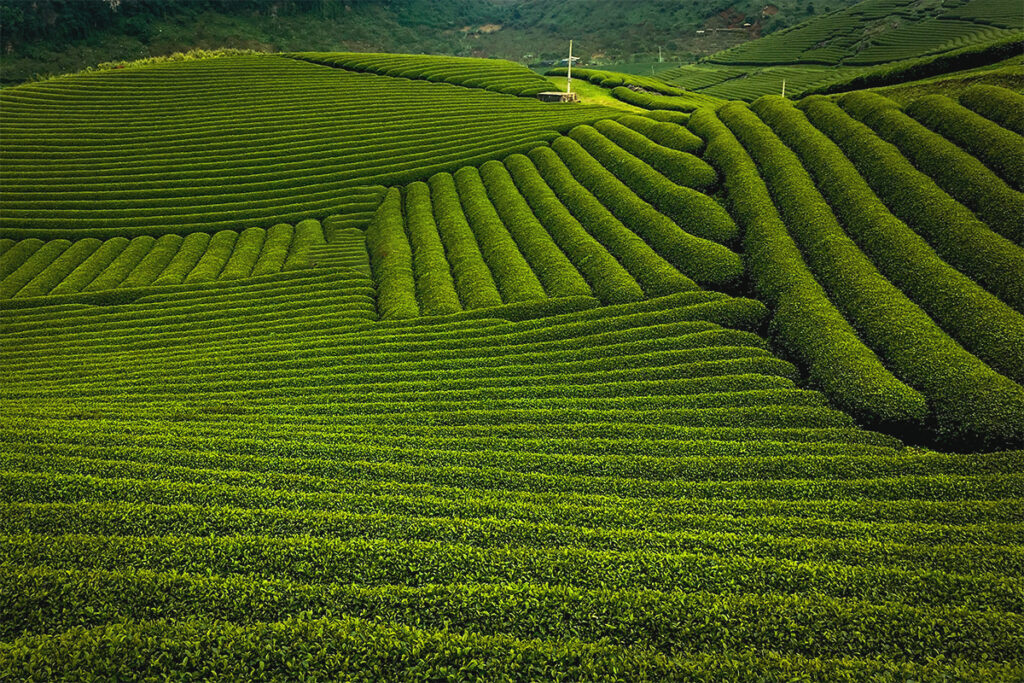
Moc Suong is a large, organic tea plantation known for producing Oolong and Shan Tuyet teas using traditional and eco-friendly methods. They offer tours, tastings, and insight into tea processing — making it a good choice if you want more than just photos.
It’s located in Tan Lap, a little further from the town center — about 15 km, with smooth roads most of the way.
Tip: This is one of the quietest tea hills, ideal for a more local and hands-on experience. You can also buy high-quality packaged tea here.
3. Tan Lap 3 Heart-Shaped Tea Hill
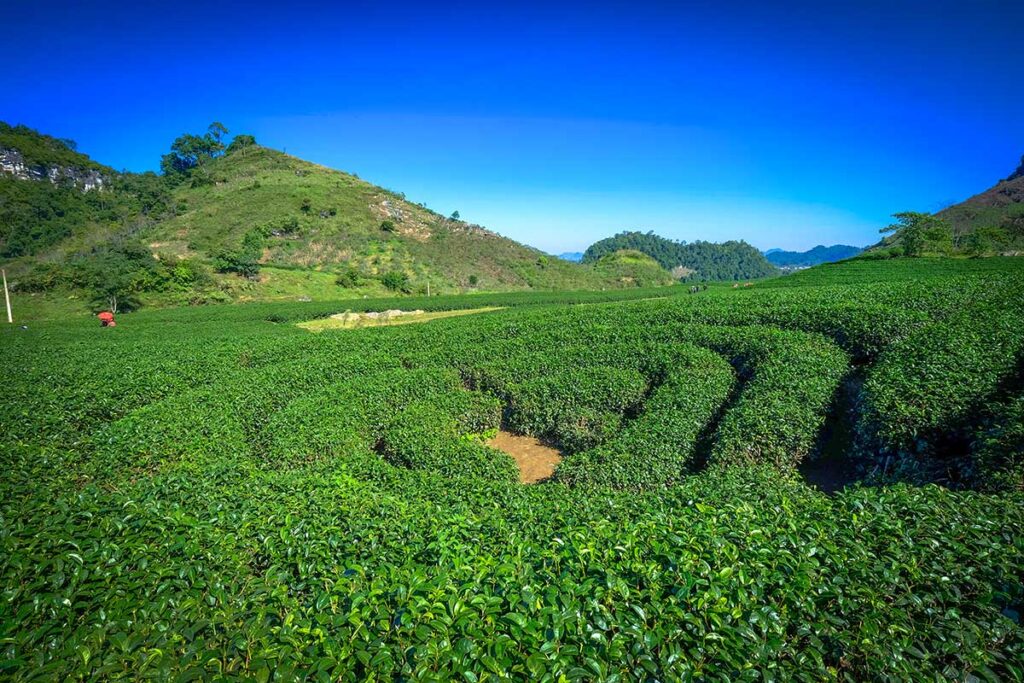
Smaller and less visited than the main heart-shaped hill, Tan Lap 3 has its own charm. The tea rows are planted in a sideways heart shape — harder to see from ground level, but peaceful and scenic.
It’s located about 1 km deeper into the fields from the main Tan Lap area. You’ll need to walk through or ride a scooter on narrow paths.
Tip: Bring a drone or climb a small slope to capture the heart shape clearly. Best visited in the late morning once the mist lifts.
4. Nong Truong Tea Hill (near Moc Chau Town)
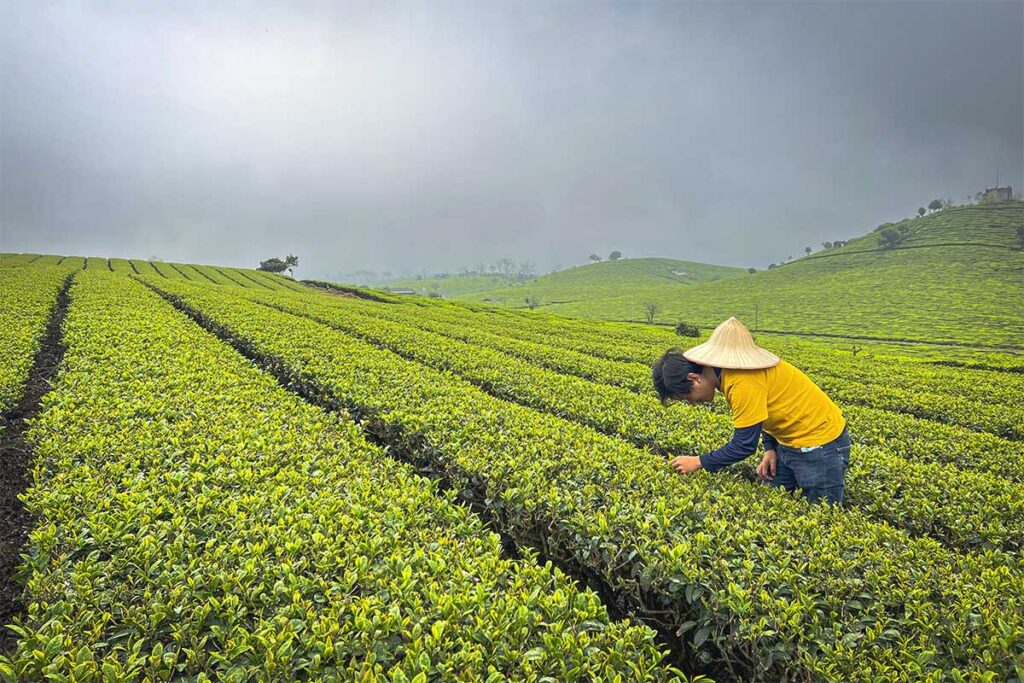
Nong Truong is one of the oldest and most central tea hills, set right next to Moc Chau Farm Town. It features large, sloping tea fields with panoramic views from the top.
Just a few minutes from the town center, it’s easy to get to on foot, by motorbike, or by taxi. The area is also near local food stalls and cafés.
Tip: Look for the hilltop with an old water tank — it’s a great photo spot overlooking the valley and Highway 6.
5. Phong Khong Tea Hills
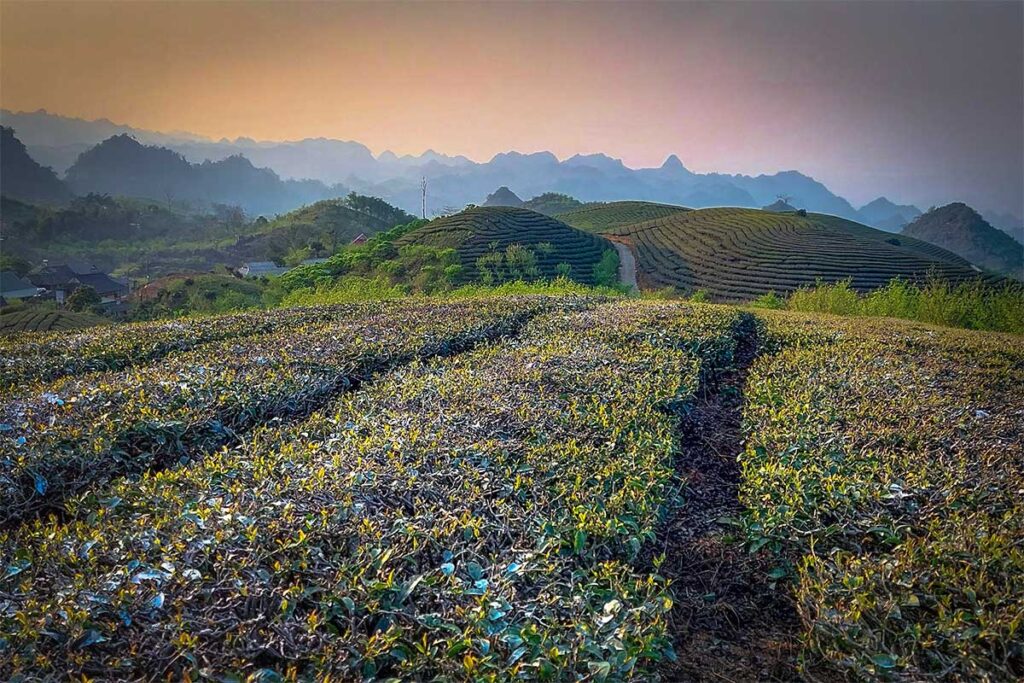
Phong Khong is a wide, open tea plantation with fewer visitors and a calm, natural atmosphere. The landscape feels more rural and untouched, with rolling hills and mountain backdrops.
It’s located a bit outside the main town area but reachable by motorbike or car in under 30 minutes. Ask locals for directions, as signage is limited.
Tip: Great for drone photography and peaceful walks. In season, nearby flower fields add color and variety to your visit.
Tea culture & production in Moc Chau
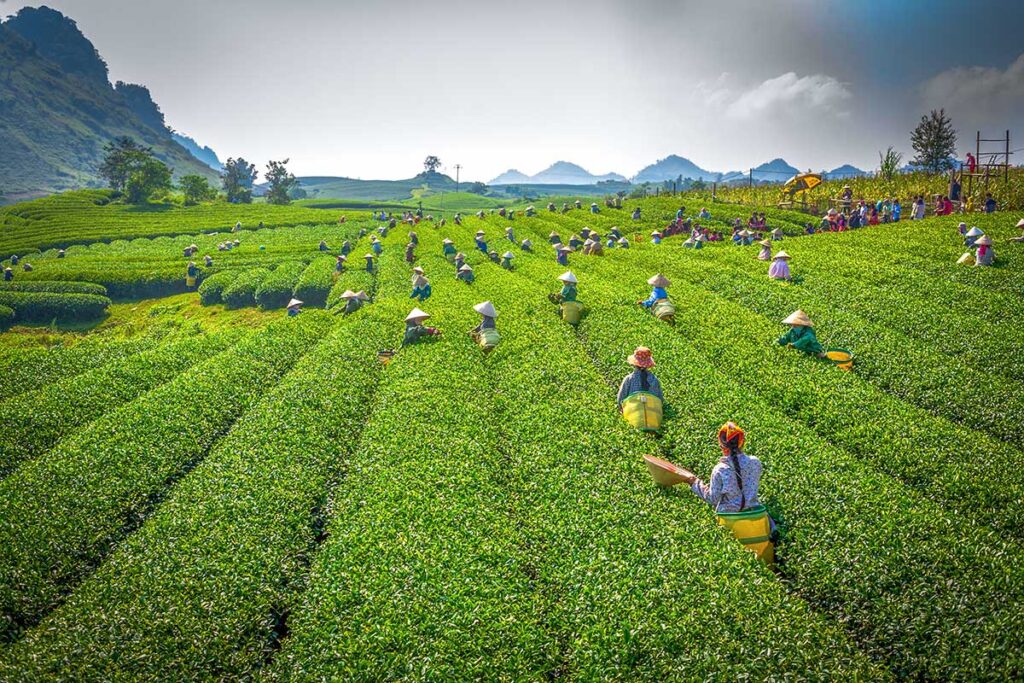
Tea farming is deeply rooted in Moc Chau’s culture and economy. Most plantations harvest tea by hand, with workers picking young buds and leaves in the early morning. These are then processed on-site or at nearby factories — either using traditional pan-drying methods or more modern techniques for higher-end teas like Oolong.
The region grows several different varieties:
- Shan Tuyet: A native Vietnamese tea known for its bold, earthy flavor. Often harvested from older trees and traditionally dried or fermented.
- Oolong: Introduced from Taiwan and grown mainly at plantations like Moc Suong. It’s semi-oxidized and has a floral, slightly sweet profile. Processing takes longer and involves multiple steps including wilting, rolling, and roasting.
- Kim Tuyen and Thanh Tam: Two highland Oolong variants with lighter, smoother flavors. Some have notes of milk or wildflowers, depending on the season and soil.
Many farms in Moc Chau — especially those exporting to Japan or Taiwan — now follow organic farming methods. This means no chemical pesticides, no synthetic fertilizers, and regular pruning to keep the plants healthy. Some plantations even compost with natural materials like dried corn husks or cow manure to maintain soil quality.
The result is a slower-growing but more flavorful tea, harvested with care and often packaged on-site for local sale or export. Whether you’re tasting tea at a roadside stand or touring a full-scale operation, the region’s mix of tradition and innovation makes for a unique experience.
Tea tasting & Buying tea as a souvenir
If you want to bring home something local from Moc Chau, tea is one of the best souvenirs you can buy. You’ll find it at local cooperatives, small tea shops, and directly at some plantations like Moc Suong, where you can also join a tasting.
Prices vary depending on quality and packaging. Basic loose-leaf green tea starts around 50,000–100,000 VND per 100g, while premium Oolong or Shan Tuyet can cost 200,000–500,000 VND or more. Export-grade teas tend to be vacuum-packed and well-labeled — a good sign of quality if you’re buying for gifts.
The best teas to bring home include:
- Oolong (for floral, smooth flavor)
- Shan Tuyet (for something more earthy and bold)
To spot good tea, look for whole, unbroken leaves, a clean, consistent color (not faded), and a fresh, grassy or floral aroma. When brewed, the tea should be clear and fragrant, without bitterness or cloudiness. If possible, try before you buy — most producers are happy to let you taste.
A small vacuum-sealed bag of local tea makes a lightweight, meaningful gift — and a great reminder of your time in the hills.
Other things to do nearby
If you’re exploring the tea plantations, it’s easy to combine them with other nearby sights. For more ideas, check our full guide: Best things to do in Moc Chau.
- Na Ka Plum Valley – A scenic valley filled with plum trees, especially beautiful during blossom and harvest seasons.
- Dai Yem Waterfall – A two-level waterfall in a tourist zone with paths, viewpoints, and optional add-ons like a glass bridge.
- Bach Long Glass Bridge – Vietnam’s record-breaking glass bridge with mountain views and dramatic cliffside paths.

